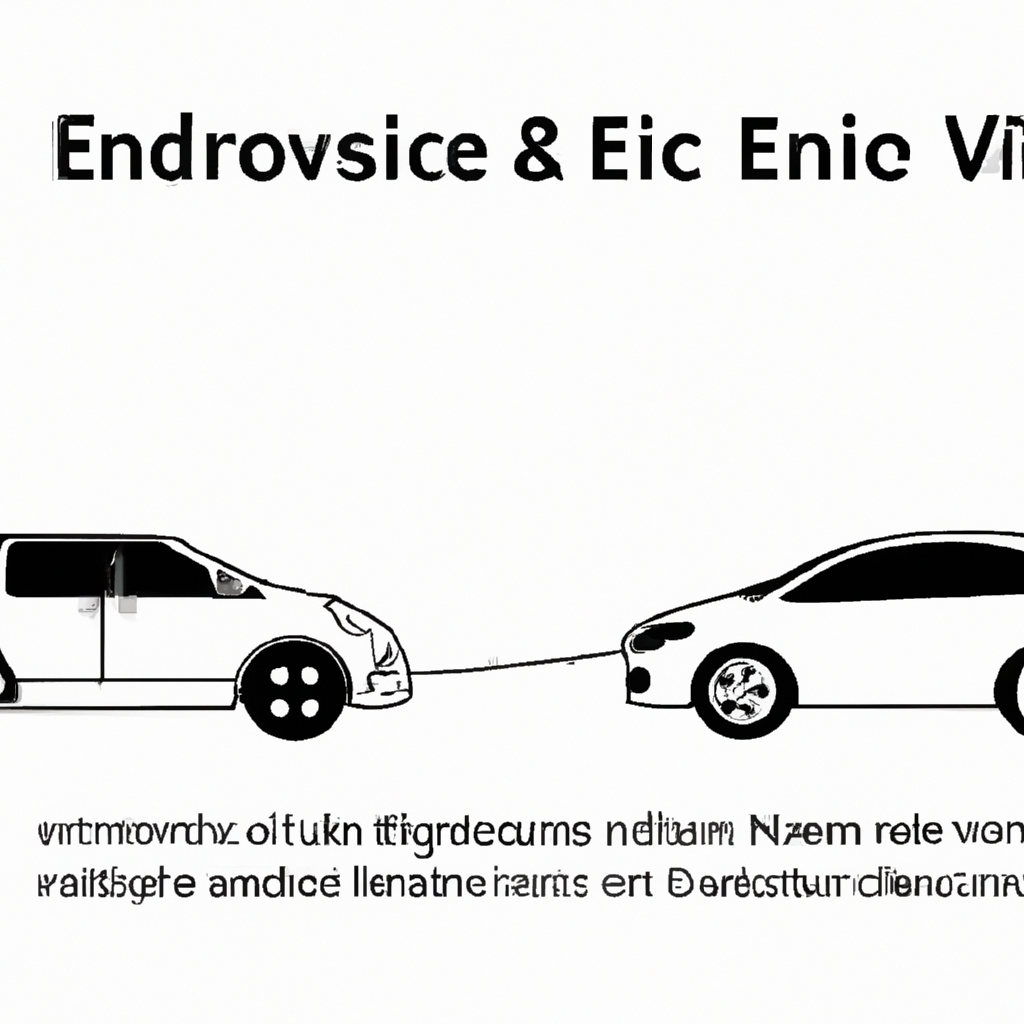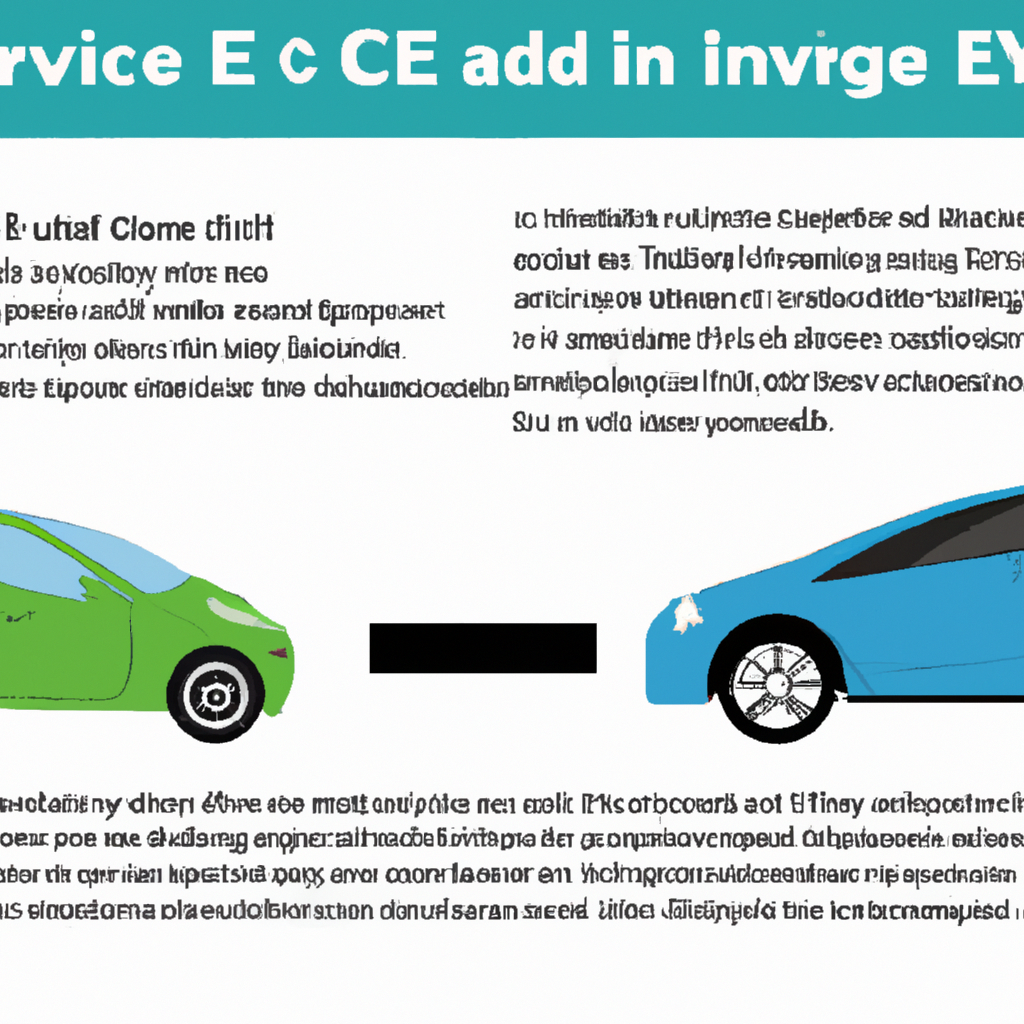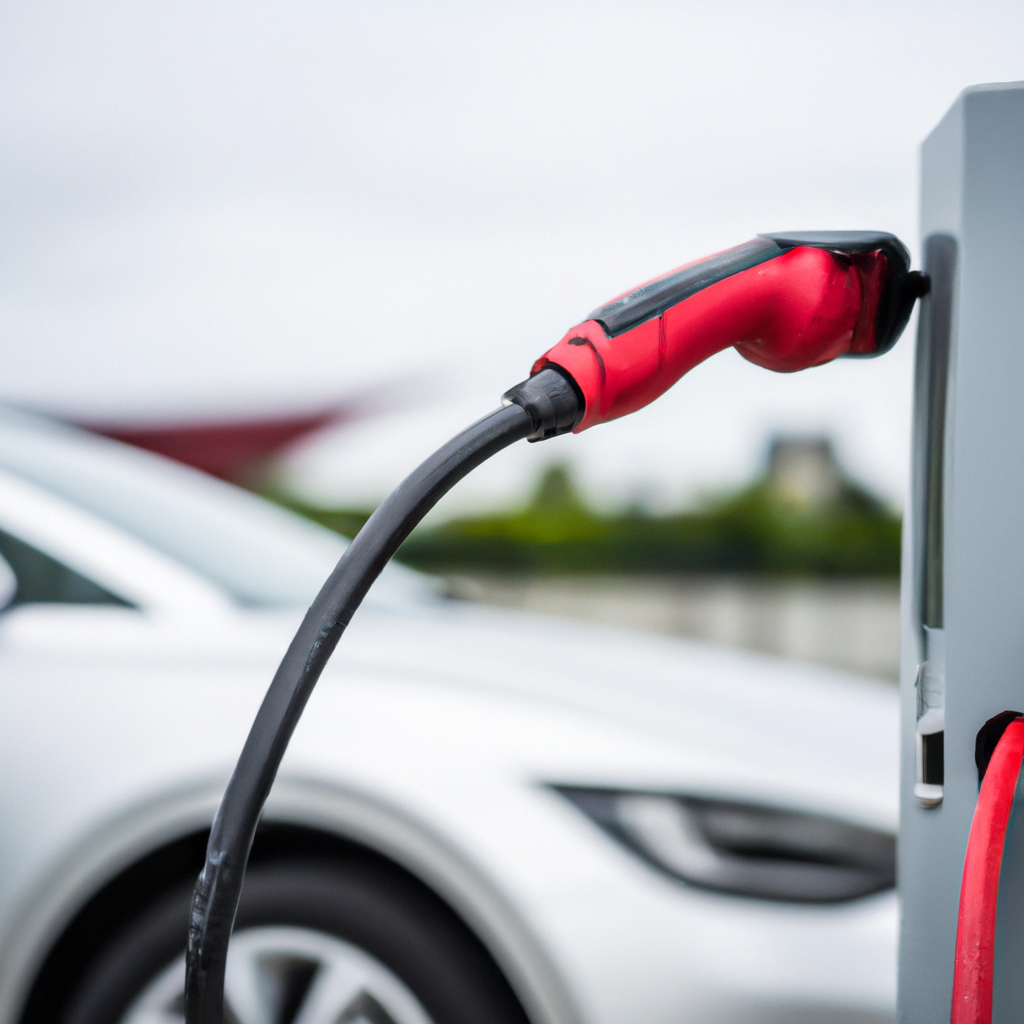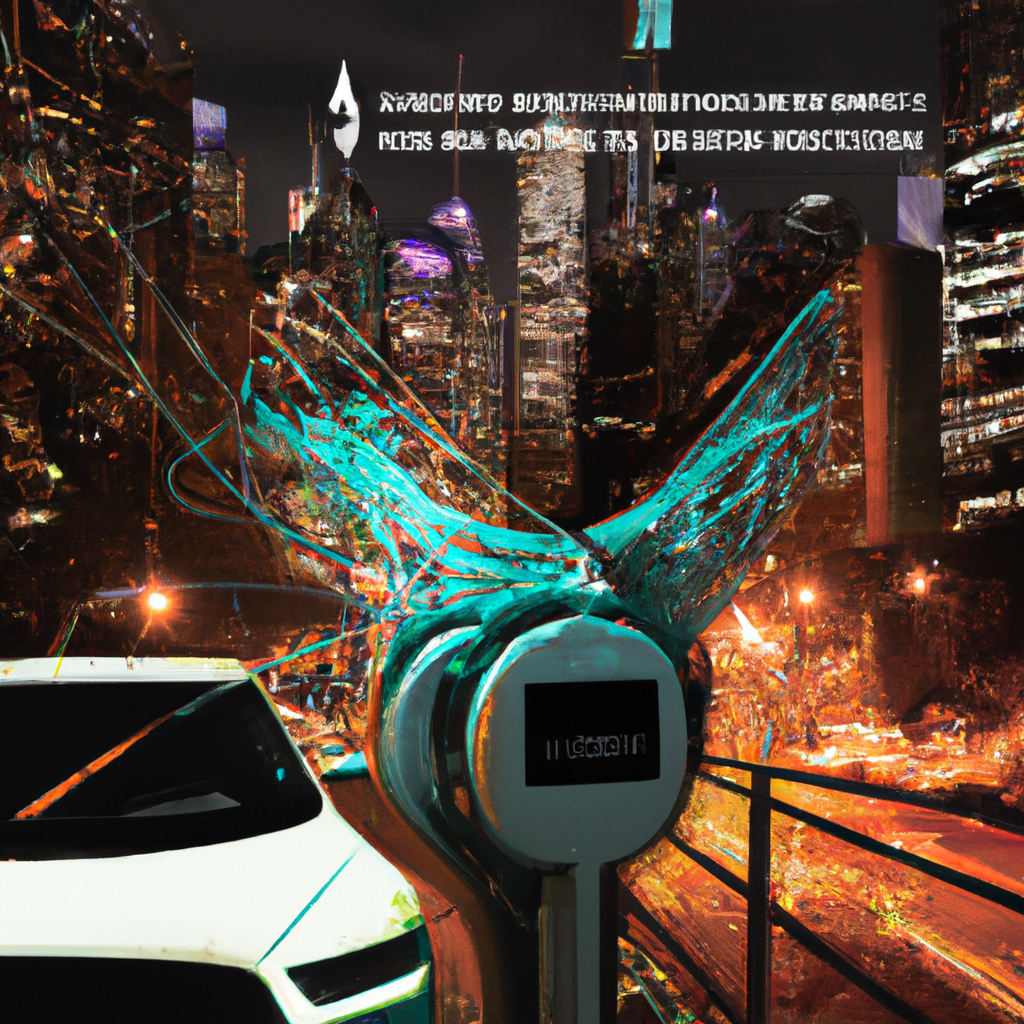EV Cars Vs. Internal Combustion Engine (ICE) Vehicles: A Comparative Review
September 23, 2023 | by Jacob Kang

Looking to make an informed decision on whether to go electric or stick with a traditional internal combustion engine (ICE) vehicle? Look no further! Our article, “EV Cars Vs. Internal Combustion Engine (ICE) Vehicles: A Comparative Review,” is here to give you a thorough and balanced overview of the two options. We’ll compare their performance, environmental impact, cost, and more, so you can weigh the pros and cons and make a choice that’s right for you. So, buckle up and get ready to explore the exciting world of EV cars versus ICE vehicles!
EV Cars Vs. Internal Combustion Engine (ICE) Vehicles: A Comparative Review
When it comes to choosing a vehicle, there are plenty of considerations to take into account. One of the most important factors is undoubtedly the vehicle’s impact on the environment. In this article, we will explore the environmental impact of electric vehicles (EVs) compared to internal combustion engine (ICE) vehicles. We will also delve into other aspects such as cost efficiency, performance, range and charging, availability and variety, user experience, safety features, infrastructure and support, resale value, and the future outlook of EVs.
1. Environmental Impact
1.1 Carbon Emissions
Carbon emissions are a significant contributor to climate change, and reducing them is crucial for a sustainable future. Electric vehicles have a clear advantage over ICE vehicles in this regard. EVs produce zero tailpipe emissions, as they are powered by electricity stored in batteries. On the other hand, ICE vehicles burn fossil fuels, releasing harmful greenhouse gases into the atmosphere. By choosing an EV, you can directly contribute towards reducing carbon emissions and fighting climate change.
1.2 Air Pollution
Air pollution is a major health concern, particularly in densely populated areas. ICE vehicles emit various pollutants such as nitrogen oxides (NOx), particulate matter (PM), and volatile organic compounds (VOCs), which contribute to poor air quality and respiratory problems. EVs, on the other hand, have zero tailpipe emissions and do not contribute to air pollution. By transitioning to electric vehicles, we can significantly improve air quality and create healthier living environments.
1.3 Noise Pollution
Noise pollution is often an overlooked aspect of vehicle emissions, but it can have a significant impact on quality of life, especially in urban areas. ICE vehicles produce engine noise, tire noise, and exhaust noise, contributing to noise pollution. Electric vehicles, on the other hand, are much quieter due to the absence of an internal combustion engine. This reduced noise level enhances the overall driving experience and minimizes noise pollution in residential areas.
2. Cost Efficiency
2.1 Purchase Cost
The initial cost of purchasing an electric vehicle may be higher compared to an ICE vehicle. However, it’s important to consider the long-term cost savings. EVs have lower operating costs, thanks to lower electricity prices compared to gasoline or diesel prices. Additionally, EVs require less maintenance and have a longer lifespan, resulting in potential savings in the long run.
2.2 Fuel Efficiency
Electric vehicles are significantly more fuel-efficient than ICE vehicles. While ICE vehicles rely on burning fossil fuels, EVs convert electrical energy into motion with high efficiency. This means that EVs can travel longer distances on the same amount of energy compared to ICE vehicles. Consequently, EV owners can enjoy lower fuel costs and higher energy efficiency.
2.3 Maintenance and Repair
Electric vehicles require less maintenance compared to ICE vehicles. This is because EVs have fewer moving parts, reducing the risk of mechanical failures. There is no need for oil changes, spark plug replacements, or exhaust system maintenance in EVs. Furthermore, regenerative braking systems in EVs reduce wear and tear on traditional brakes, resulting in longer brake life. Overall, EVs offer potential savings in maintenance and repair costs compared to ICE vehicles.

3. Performance and Power
3.1 Acceleration
Electric vehicles are known for their impressive acceleration capabilities. The instant torque provided by electric motors allows EVs to accelerate swiftly from a standstill. This quick acceleration provides a thrilling driving experience and can be advantageous in situations where prompt acceleration is needed.
3.2 Top Speed
Top speed is another aspect where EVs shine. Due to the nature of electric motors, EVs can achieve high speeds effortlessly. Some high-performance electric vehicles even surpass the top speeds of their ICE counterparts. If you enjoy the adrenaline rush of speed, an electric vehicle may be just the right choice for you.
3.3 Power Output
Electric vehicles offer impressive power output. Electric motors deliver power directly to the wheels, resulting in instant torque and a smooth driving experience. The power output of EVs can vary depending on the model and brand, with some electric vehicles rivaling the power outputs of high-performance ICE vehicles. Whether you need power for towing or for a thrilling driving experience, electric vehicles can deliver impressive performance.
4. Range and Charging
4.1 Electric Vehicle Range
The range of an electric vehicle refers to the distance it can travel on a single charge. EV technology has made significant advancements in recent years, leading to improved ranges. However, it’s important to note that EV range still varies depending on the model and the specific driving conditions. While some EVs can achieve over 300 miles on a single charge, others may have a shorter range. It’s essential to consider your daily driving needs and charging infrastructure availability when assessing the range of an electric vehicle.
4.2 Charging Infrastructure
Charging infrastructure is a crucial factor for EV owners. The availability of charging stations and their accessibility can determine the feasibility of owning an electric vehicle. Over the years, the charging infrastructure for EVs has been expanding globally. Public charging stations are becoming increasingly common, and many workplaces, shopping centers, and residential areas have installed charging facilities. Additionally, technological advancements have led to faster charging times, reducing the inconvenience of charging an EV.
4.3 Refueling Time
Refueling time is a significant consideration for many prospective EV owners. While refueling an ICE vehicle is relatively quick, charging an electric vehicle takes longer. However, with advancements in charging technology, the time required to charge an EV has significantly decreased. Fast-charging stations can replenish a significant portion of an electric vehicle’s battery in a short amount of time. Moreover, the ability to charge a vehicle at home overnight eliminates the need for frequent charging stops. As EV technology continues to evolve, we can expect further improvements in charging times.

5. Availability and Variety
5.1 Models and Brands
The variety of electric vehicle models and brands has been expanding rapidly in recent years. Many leading automotive manufacturers are investing in the development and production of electric vehicles, offering consumers a wide range of options to choose from. Whether you prefer a compact car, a luxury sedan, an SUV, or a sports car, you are likely to find an electric vehicle that suits your preferences and needs.
5.2 Customization Options
Electric vehicles offer customization options similar to ICE vehicles. From color choices to interior features, you can personalize your electric vehicle to reflect your unique style. Additionally, many electric vehicle manufacturers provide options for battery size, allowing you to choose a range that aligns with your specific requirements. The ability to customize your electric vehicle ensures that you can find a model that fits your lifestyle and preferences.
5.3 Market Trends
The electric vehicle market is experiencing significant growth and evolving at a rapid pace. Government incentives and regulations promoting sustainable transportation are driving the adoption of electric vehicles. As a result, market trends indicate an increasing demand for electric vehicles globally. This growing demand has further incentivized automotive manufacturers to invest in electric vehicle production, resulting in a wider range of models and improved technologies. Keeping up with the market trends will provide you with valuable insights when considering an electric vehicle.
6. User Experience
6.1 Driving Experience
Electric vehicles provide a unique and enjoyable driving experience. The instant torque from electric motors ensures quick acceleration and a smooth ride. The absence of engine noise in EVs creates a quiet and serene driving environment. Additionally, many electric vehicles offer different driving modes, allowing you to customize your driving experience. Whether you prefer a relaxed and efficient drive or a sportier feel, electric vehicles can cater to your preferences.
6.2 Interior Comfort
Electric vehicles often prioritize interior comfort for an enhanced driving experience. With the absence of an internal combustion engine, there is more space available for passengers and cargo. Additionally, many electric vehicles come equipped with advanced climate control systems, ensuring optimal comfort for all occupants. Superior noise insulation and luxurious interiors ensure a comfortable and peaceful journey for electric vehicle owners.
6.3 Infotainment and Connectivity
Electric vehicles embrace the latest technological advancements, offering advanced infotainment and connectivity features. Touchscreen displays, smartphone integration, and voice commands are common features found in many electric vehicles. These features enhance the overall user experience by providing easy access to entertainment, navigation, and communication functionalities. With EVs, you can enjoy a connected and intuitive driving experience.

7. Safety Features
7.1 Crash Test Ratings
Safety is a paramount concern for any vehicle owner. Electric vehicles are subjected to rigorous crash tests to assess their safety performance. In many cases, EVs have received top safety ratings, providing peace of mind to owners. Additionally, the unique design of electric vehicles, with their heavy battery packs located at the bottom of the vehicle, results in a lower center of gravity, enhancing stability and reducing the risk of rollovers.
7.2 Advanced Driver Assistance Systems (ADAS)
Advanced Driver Assistance Systems (ADAS) are becoming increasingly prevalent in both electric and ICE vehicles. Features such as lane-keeping assist, automatic emergency braking, adaptive cruise control, and blind-spot monitoring enhance safety on the road. Electric vehicles often come equipped with cutting-edge ADAS technologies, ensuring a safer driving experience for both the driver and other road users.
7.3 Fire Risk
Fire risk is a concern for any vehicle, regardless of whether it is electric or ICE. While there have been isolated incidents of electric vehicle fires, it’s essential to note that the risk is relatively low. The battery systems in EVs are designed with various safety precautions, including thermal management systems and extensive testing. Strict standards and regulations ensure that electric vehicles meet stringent safety requirements, minimizing the risk of fire incidents.
8. Infrastructure and Support
8.1 Government Incentives
Government incentives play a significant role in promoting electric vehicle adoption. Many countries and regions offer financial incentives, tax credits, and subsidies to encourage the purchase of electric vehicles. These incentives can significantly reduce the up-front costs of owning an electric vehicle, making them more affordable and attractive to consumers. Staying informed about government incentives in your area can help you take advantage of potential cost savings.
8.2 Charging Stations
The availability of charging stations is crucial for the widespread adoption of electric vehicles. Governments, businesses, and organizations are investing in the installation of public charging stations to create a robust charging infrastructure. Many electric vehicle manufacturers also collaborate with charging station providers to expand the charging network. The increasing prevalence of charging stations ensures that you can find a charging point conveniently, whether at home, work, or during a long journey.
8.3 Technical Support and Services
As electric vehicles become more commonplace, support and services for EV owners are also growing. Many automotive manufacturers provide specialized training to technicians for servicing electric vehicles. Additionally, numerous third-party service providers offer maintenance and repair services for EVs. It’s crucial to ensure that you have access to technical support and services in your area to address any potential issues with your electric vehicle.

9. Resale Value
9.1 Depreciation
Depreciation is an important consideration for any vehicle owner. While both electric and ICE vehicles experience depreciation over time, the rate of depreciation can vary. Factors such as market demand, technological advancements, and battery degradation can influence the resale value of electric vehicles. However, it’s worth noting that the long-term cost savings associated with owning an electric vehicle can offset potential depreciation concerns.
9.2 Demand and Market Trends
Demand for electric vehicles is on the rise, and market trends indicate a growing interest in sustainable transportation. As more consumers transition to electric vehicles, the demand for used electric vehicles is also increasing. This surge in demand can positively impact the resale value of electric vehicles, especially in regions where EV adoption is rapidly growing.
9.3 Battery Replacement Costs
Battery degradation over time is a common concern among electric vehicle owners. However, advancements in battery technology have led to increased longevity and improved performance. The cost of battery replacement depends on various factors such as the specific model, battery size, and warranty coverage. It’s essential to consider the warranty and battery life expectancy when assessing potential battery replacement costs.
10. Future Outlook
10.1 Industry Developments
The electric vehicle industry is witnessing rapid developments and innovations. Automotive manufacturers are continually improving battery technology, enhancing charging infrastructure, and releasing new electric vehicle models. As governments worldwide are prioritizing sustainable transportation, industry developments are expected to accelerate, leading to further advancements and increased market adoption of electric vehicles.
10.2 Technological Advancements
Technological advancements are transforming the electric vehicle landscape. Battery technology, in particular, is evolving at a rapid pace, with increasing energy density, longer ranges, and faster charging times. Additionally, autonomous driving technology and connectivity features are being integrated into electric vehicles, enhancing safety and improving the overall driving experience. Keeping up with technological advancements can help you make informed decisions when considering an electric vehicle.
10.3 Policy and Regulatory Factors
Government policies and regulations have a significant influence on the electric vehicle industry. Many countries have set ambitious targets for electric vehicle adoption, incentivizing consumers and automakers to transition to electric vehicles. Additionally, policies promoting renewable energy sources and clean transportation contribute to the growth of the electric vehicle market. Staying informed about policy and regulatory factors can provide insights into the future of electric vehicles and the potential benefits they offer.
In conclusion, electric vehicles offer numerous advantages compared to internal combustion engine vehicles. From their environmental impact and cost efficiency to performance, range and charging capabilities, safety features, and futuristic advancements, EVs are paving the way towards a sustainable and efficient transportation future. By considering all aspects discussed in this article, you can make an informed decision about whether an electric vehicle is the right choice for you. Embrace the electric revolution and contribute to a greener and cleaner world with an electric vehicle.

RELATED POSTS
View all


